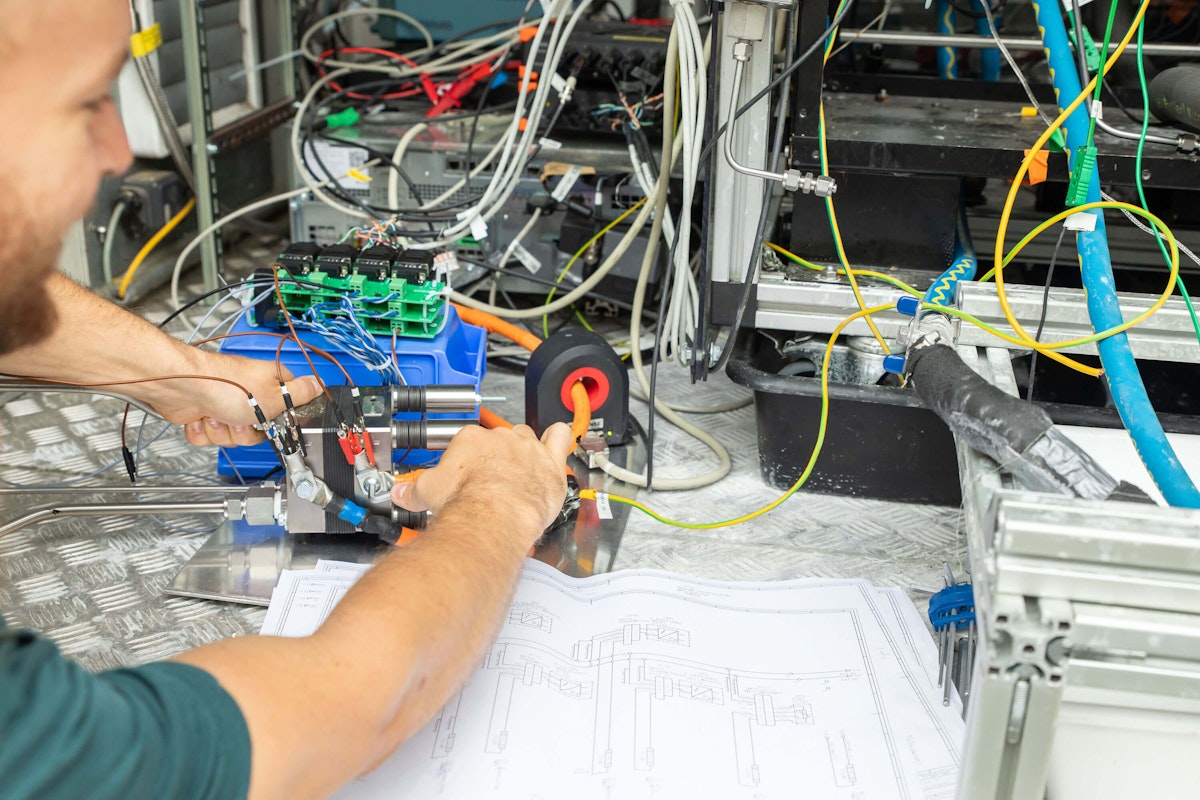Table of contents
Browse categories
Browse authors
 AB
ABAlberto Boffi
 AL
ALAlessia Longo
 AH
AHAl Hoge
 AB
ABAljaž Blažun
 BJ
BJBernard Jerman
 BČ
BČBojan Čontala
 CF
CFCarsten Frederiksen
 CS
CSCarsten Stjernfelt
 DC
DCDaniel Colmenares
 DF
DFDino Florjančič
 EB
EBEmanuele Burgognoni
 EK
EKEva Kalšek
 FB
FBFranck Beranger
 GR
GRGabriele Ribichini
Glacier Chen
 GS
GSGrant Maloy Smith
 HB
HBHelmut Behmüller
 IB
IBIza Burnik
 JO
JOJaka Ogorevc
 JR
JRJake Rosenthal
 JS
JSJernej Sirk
 JM
JMJohn Miller
 KM
KMKarla Yera Morales
 KD
KDKayla Day
 KS
KSKonrad Schweiger
Leslie Wang
 LS
LSLoïc Siret
 LJ
LJLuka Jerman
 MB
MBMarco Behmer
 MR
MRMarco Ribichini
 ML
MLMatic Lebar
 MS
MSMatjaž Strniša
 ME
MEMatthew Engquist
 ME
MEMichael Elmerick
 NP
NPNicolas Phan
 OM
OMOwen Maginity
 PF
PFPatrick Fu
 PR
PRPrimož Rome
 RM
RMRok Mesar
 RS
RSRupert Schwarz
 SA
SASamuele Ardizio
 SK
SKSimon Kodrič
 SG
SGSøren Linnet Gjelstrup
 TH
THThorsten Hartleb
 TV
TVTirin Varghese
 UK
UKUrban Kuhar
Valentino Pagliara
 VS
VSVid Selič
 WK
WKWill Kooiker
Electro Impedance Spectroscopy (EIS) Measurements on Electrolysis Stacks
Joshua Eder, Martin Höglinger, Bianca Grabner, Stefan Kartusch, and Alexander Trattner
HyCentA Research GmbH,
August 5, 2025
Green hydrogen derives from splitting water into hydrogen and oxygen using renewable electricity. Electrolysis technology is essential for producing green hydrogen and storing energy in Power-to-X systems. The Austrian hydrogen research center HyCentA uses Dewesoft devices and software to apply impedance spectroscopy. The center uses this technique to investigate the electrochemical properties of its electrolysis stacks and components.

The hydrogen produced is suitable for short-term energy storage to absorb load peaks from intermittent wind and solar power electricity and as a long-term secondary energy storage. Moreover, green hydrogen has the potential to revolutionize industry decarbonization.
Processes such as ammonia, semiconductor, and steel production, which currently rely on large amounts of hydrogen, could save significant CO2 emissions with green hydrogen. However, if the industry uses hydrogen as an energy source for sector coupling in the future, much larger quantities will be required. This perspective further highlights its potential applications.
The EU's planned electrolysis output by 2030, which is a significant part of its strategy to achieve carbon neutrality, amounts to 2 x 40 GW [1]. That is, 40 GW in Europe and 40 GW in Europe's neighboring countries with exports to the EU. Considering this, around 1 GW of electrolysis capacity is currently installed in the EU [2]. This deficiency underscores the urgent need for a massive scale-up of electrolysis technology, quickly increasing parameters such as efficiency, long-term stability, and availability.
Green hydrogen
Green hydrogen, produced through electrolysis using renewable energy sources like wind or solar power, holds immense potential as a clean and sustainable energy carrier. However, research and industry must address several technical challenges and issues for its widespread adoption and commercial viability:
Cost: Currently, the cost of producing green hydrogen is higher than that of conventional hydrogen production methods, such as steam methane reforming. The pricing is mainly due to the high CAPEX costs of the machinery. Renewable energy sources provide cheap electricity, especially during peak production periods. Lowering production costs is crucial for green hydrogen to compete with fossil fuel-derived hydrogen. The implementation of substantial CO2 taxes could accelerate the process.
Energy-Intensive: Electrolysis, producing green hydrogen, requires substantial amounts of electricity. Scaling up electrolysis operations to meet demand is only feasible if the scale-up of renewable energy sources is forced at the same rate.
Infrastructure: The infrastructure required for large-scale production, storage, and distribution of green hydrogen must be improved. Building infrastructure, including electrolyzers, hydrogen storage facilities, pipelines, and refueling stations, requires substantial investment and planning.
Intermittency: Balancing energy demand and ensuring grid stability is essential. The intermittency of renewable energy sources, such as wind and solar, challenges the grid. The production of green hydrogen can be a helpful addition to this puzzle as the technology can perform very dynamically. Electrolysis operators must synchronize with renewable energy availability to ensure efficient production. Energy storage solutions like large-scale hydrogen production are needed to store excess renewable energy for periods of low generation.
Storage and Transportation: Hydrogen storage requires high-pressure tanks as the volumetric energy density is relatively low compared to conventional fuels like gasoline. Developing cost-effective and safe storage and transportation solutions, such as hydrogen pipelines or liquefaction, is essential for widespread adoption.
Addressing these issues will require collaborative efforts from various stakeholders. Governments, industries, and research institutions must collaborate to drive innovation and investment. Policy support will also be essential for the widespread adoption of green hydrogen. This collaboration is crucial for establishing green hydrogen as a critical component of the clean energy transition. The availability of highly capable cell voltage monitoring from Dewesoft for the HyCentA Research GmbH helps to improve electrolysis technology.
Impedance spectroscopy
The electrolysis technology of today has limitations in efficiency and long-term stability, necessitating rapid improvements. Research institutions like HyCentA use innovative measurement methods to achieve these ambitious development goals. One such method is impedance spectroscopy, which is applied at the electrolysis stack level. This approach helps accelerate product development in collaboration with industry partners.
Electric Impedance Spectroscopy (EIS) is a versatile technique for investigating electrochemical systems like fuel cells, batteries, supercapacitors, and electrolysis cells. Through this process, specific parameters can be measured and analyzed during operation. This analysis can assign electrochemical phenomena and assess their performance the individual processes can be assigned to internal components.
Since the technique applies a tiny sine wave signal to the Device Under Test (DUT), we can assume a linear-time-invariant system. EIS is a nondestructive technique, which makes it attractive for in-situ characterizations.
EIS data refers to Electrochemical Impedance Spectroscopy (EIS) data. It is a type of data collected during EIS measurements or EIS experiments, which analyze the impedance (resistance to alternating current) of an electrochemical system as a function of frequency. EIS is widely used in fields like materials science, electrochemistry, and battery research to study the behavior of electrochemical systems and interfaces.
This detailed description of the processes can provide a better understanding of the system and form the basis for development decisions to achieve greater efficiency and long-term stability through carefully implemented improvements.
EIS can be used for the two leading state-of-the-art membrane electrolysis technologies:
PEM (Proton Exchange Membrane) and
AEM (Anion Exchange Membrane) electrolysis.
HyCentA
HyCentA, Hydrogen Research Centre Austria, founded in 2005, is a research center based at the Graz University of Technology in Austria. With its interdisciplinary team of more than 100 employees, HyCentA Research GmbH drives research and development on green hydrogen technologies. The center conducts joint projects with leading companies and scientific partners on producing, distributing, storing, and applying renewable hydrogen.
The test benches at HyCentA allow the testing and characterization of electrolysis stacks (test specimens) with power ratings of 15 up to 150 kW. The operating voltage is in the range of ~2 V per cell, with current densities of up to 4 A/cm² possible for most commercially available stacks. The cells’ active electrode surface determines the test specimen’s current consumption. A reference electrode can be used to measure the potential of the active electrodes without interfering with the reaction to monitor and control the electrochemical processes. We set the maximum current for the most potent test bench to 6000 A. In so-called short stacks, stacks with 30 cells have already been tested.
Electrolyzers operate galvanostatically using direct current. Impedance spectroscopy supplies meaningful characterizations of the stack, such as measuring electric, contact, and polarization resistances. The impedance data can provide conclusions about the stack's operating conditions and state of health.
List of equipment used
Two SIRIUSi-8xSTG data acquisition systems with DualCoreADC (2x 24bit analog-to-digital converters), galvanically isolated inputs, universal inputs for strain gauge, voltage, potentiometer, etc.
DewesoftX software with Math modules for calculations such as FFT analysis and others
Dewesoft NET module for live transmission of highspeed data to third-party software
FFT ANALYZER module for frequency analysis
Function generator
Measurements
Two synchronized Dewesoft DAQ instruments, SIRIUSi-8xSTG, were used for total current and voltage measurements on the stack and individual cells. SIRIUS modular is a versatile and robust data acquisition system that provides high-end signal conditioning amplifiers for sensors. We used a zero-flux transducer for the current measurement.
The Dewesoft measuring devices also recorded the current sensor’s signal. The different voltage measuring ranges, the high sampling rate (up to 15 million data points per second), and the isolation of the inputs are significant advantages that make the device ideal for this measuring task. In the DewesoftX software, the FFT (Fast Fourier Transform) analyzer module allows direct measurement transformation into the frequency domain for direct data validation.
The isolated and galvanically separated design allows for direct measurement of the stack’s voltage and differential measurement of the cell voltages. Galvanic isolation is necessary because electrolyzers operate in a galvanically isolated power network (Isolé Terre).
We conducted impedance spectroscopy measurements on a PEM electrolyzer stack with six cells and an active surface area of 75 cm2. The Programmable Power Supply by Regatron AG provides a direct current base load and the superimposed sine signal for the impedance measurement.
Figure 1 shows the system of the test; the current is controlled, and the corresponding voltage at the stack is measured. The frequency of this alternating current signal is swept in the range from 0.1 Hz to 10 kHz. The measured values were transformed into the frequency range. This step was necessary to calculate the impedance for each measurement point corresponding to a specific frequency. Afterward, we calculated the impedance.
The measurement result is depicted in a Nyquist plot, where each frequency represents a point on the locus curve - see Figure 8.
Depending on the technology and the internal stack structure, we can form an equivalent circuit diagram of the stack. This diagram includes both electrical and electrochemical components. See Table 1 and Figure 2 for reference.
We can assign the measurement to the stack's internal resistances and reactions based on the equivalent circuit model assumptions. All components are normalized to the reactive area for comparison between stacks.
Modeling an equivalent circuit is permissible only when assuming that the electrolysis stack behaves like an LTI (Linear-Time-Invariant) system since the equivalent circuit's components have LTI behavior. Otherwise, the assigned measured values to the circuit components are incorrect. Small amplitudes of the alternating superimposed currents only meet this assumption, with the measurability of the voltage answer requiring the minimum size.
Due to the layer structure with a non-electron-conducting membrane, an electrolysis stack shows capacitive behavior. As a core element, we can assume that the membrane behaves as an ionic resistor. So-called double-layer capacitances build up at the contact surfaces on both sides of the membrane, which connect in parallel to other polarization resistors.
The equivalent circuit, which we derived from the cross-section of a cell and confirmed with measurements, can be seen in Figure 2. Due to the capacitances, we determined a purely ohmic resistance in the high-frequency range. In the Nyquist diagram, this is the intersection with the real axis, the so-called high-frequency resistance (HFR).
| Symbol | Unit | Description |
|---|---|---|
| \( R_{\Omega,HF} \) | Ω·cm² | Ohmic resistances, dominant at high frequencies |
| \( R_{c,pol} \) | Ω·cm² | Polarisation resistance of the cathode half-cell reaction |
| \( R_{a,pol} \) | Ω·cm² | Polarisation resistance of the anode half-cell reaction |
| \(Q_{c, dl} \) | F·cm-2 | Constant phase element of the cathode half-cell reaction |
| \(Q_{a, dl} \) | F·cm-2 | Constant phase element of the anode half-cell reaction |
| \(Z_{c, dif} \) | Ω·cm² | Diffusion resistance due to mass transport limitations in the cell at the cathode half-cell |
| \(Z_{a, dif} \) | Ω·cm² | Diffusion resistance due to mass transport limitations in the cell at the anode half-cell |
A constant phase element describes a capacitor as it occurs in electrochemical cells. It consists of a capacitance value and an exponent that describes how “unideal” the capacitor is. Further information: [4]
Measurement solution
The analysis of the impedance of an electrolyzer is most accurately executed by measuring current and voltage as close as possible to the respective test object. Such measurements allow for avoiding external influences and electromagnetic interactions in the power and sense leads.
One principle for these measurements is that the alternating component should be as large as necessary and as small as possible, with the lower limit being an evaluable signal-to-noise ratio (SNR) of the cell voltages. Therefore, an accurate voltage measurement with as little noise as possible helps the measurement stay within the test object's linear behavior range.
Figure 3 shows the schematic measurement setup for an impedance measurement. The orange cables provide the electrical supply to the electrolysis stack. The current sensor's voltage signals can be measured directly, while the individual cell voltages are measured differentially from cell to cell.
The specialized software “HySpice,” developed by HyCentA, controls and automates the measurement routine. The program controls the processes and transfers all commands and live-streams measured data with a high sampling rate to the operator via the available Dewesoft NET Interface from DewesoftX.
Measurement results
Figure 8 shows a typical measurement result for a PEM electrolysis stack. The locus curves of the six cells in the diagram are mirrored with the capacitive part in the first quadrant to improve readability. Low frequencies are on the right of the curve, and high frequencies are on the left. We display the measurement results area-specific to ensure better comparability between stacks with different active areas.
Cells 1 to 5 are comparable and have an HFR between 0.16 and 0.17 Ω∙cm². Cell 6 has a larger HFR, from which we can derive more significant contact resistances or poorer membrane conductivity. The reaction resistances of all cells are comparable because the semicircles' diameters are similar.
Conclusion
The implemented solution with the Dewesoft devices enables reliable and precise measurement of the electrolysis stacks. Various test specimens have already been measured and analyzed. This procedure allows us to identify development potential and assess the long-term stability of the cells and stacks.
Our Dewesoft measuring devices ensure accurate measurements, and we have good use of the API interface of the software DewesoftX; it is easy to use and set up. The isolated inputs and the FFT analyzer, in particular, help simplify the measurement's complexity and are well-suited for electrolyzer applications.
References
[1] “EUR-Lex,” July 8, 2020. [Online]. [Accessed on November 24, 2023].
[2] “Commission Europe,” July 8, 2020. [Online]. [Accessed on November 24, 2023].
[4] M. Lacey, “Lithium Inventory,” March 28, 2023. [Online]. [Accessed on November 24, 2023].